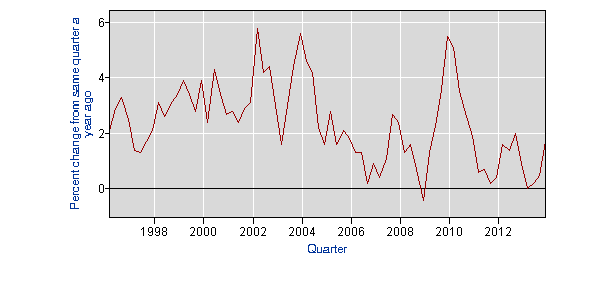August 09, 2011
An AP article on the latest productivity data from the Bureau of Labor Statistics (BLS) was a bit confused on the relationship between productivity, profits, and job growth. The article noted the 0.3 percent decline in productivity reported for the second quarter. This followed a decline of 0.6 percent in the first quarter. It suggested that this could be bad for hiring since it would reduce corporate profits and leave them with less money to hire additional workers.
Actually, slower productivity growth can be good for hiring. Increased productivity and hiring are alternative ways for meeting additional demand for labor. If employers find that they can’t get more productivity out of the existing workforce, then they have no choice but to hire more labor (which could mean overtime) in order to meet an increase in demand.
Profits on the other hand tend to be very weakly correlated with employment growth. Firms will not hire more workers just because they have higher profits, they hire more workers when they feel they have the demand for additional workers. This is why hiring was very weak in 2010 even though profits had bounced back to their pre-recession level.
It is also worth noting that productivity is poorly measured and the data are subject to large revisions. For example, productivity growth in the first quarter had been previously reported as 1.8 percent. For this reason preliminary productivity data must always be viewed with considerable skepticism.
It is worth noting that the weak productivity growth of the last year appears to be offsetting the rapid growth from earlier in the downturn. This has left the economy slightly below its post-1995 productivity growth path. Several analysts had suggested that there had been a qualitatively leap in productivity growth earlier in the downturn and offered this as an explanation for slow job growth. It now seems that firms were simply quicker to lay off workers than usual, which explains the unusually fast productivity growth early in the downturn.
Productivity Growth, 1995-2011

Source: Bureau of Labor Statistics.







Comments